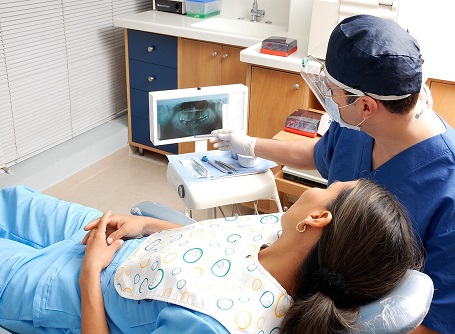 Breast augmentation is more than a cosmetic procedure, it is a personal journey toward enhanced self-image, comfort in your body, and confidence that radiates from within. While the surgery itself is handled by some top cosmetic surgery professionals in New Jersey, your preparation is the key to making the experience smooth, empowering, and transformative.
Breast augmentation is more than a cosmetic procedure, it is a personal journey toward enhanced self-image, comfort in your body, and confidence that radiates from within. While the surgery itself is handled by some top cosmetic surgery professionals in New Jersey, your preparation is the key to making the experience smooth, empowering, and transformative.
If you’re planning to take this exciting step, here are essential tips, rooted in beauty, comfort, and confidence, that will help you prepare thoroughly, both physically and emotionally.
Know Your “Why” and Define Your Expectations Clearly
Before taking the plunge, spend time exploring the deeper reasons behind your decision. Is it about feeling more proportionate in your clothes, restoring volume after childbirth, or finally aligning your outer appearance with your inner vision? Whatever your motivation, knowing your “why” will ground your experience and give you clarity.
It’s also important to visualize your results realistically, and be open during your consultation about the look you’re aiming for. Do you prefer a natural enhancement or a much more transformational one?
Generally speaking, having a clear image of your goals will help guide your surgeon and keep your expectations aligned with achievable results.
Understand That Confidence Comes from Within
At its core, breast augmentation is a tool, not a magic fix. True confidence is cultivated from how you treat yourself, speak to yourself, and view your worth. The surgery can enhance your appearance, but the confidence you radiate after comes from within. Use this experience as an opportunity to build a deeper connection with your body.
Speak affirmations daily and nourish yourself with love and care.
Celebrate not just your new curves, but the courage it took to pursue your dreams. You are not changing who you are, but honoring who you’ve always been by embracing what makes you feel beautiful. The real glow-up happens when your inner confidence and outer appearance finally align, creating a version of yourself that feels whole, vibrant, and unapologetically you.
Choose a Surgeon You Trust Completely
The expertise of your surgeon matters, but their ability to truly listen is just as essential. Look for someone who respects your concerns, answers your questions without hesitation, and speaks with honesty and empathy.
You want to work with a top board-certified plastic surgeon with a strong portfolio and glowing reviews is a good start, but the emotional connection matters too. If you’re considering something like breast augmentation in New Jersey, for instance, you should find a skilled surgeon who cares. After all, you are not just choosing a procedure, you’re entrusting someone with a deeply personal transformation that requires understanding, trust, and shared vision.
During consultations, pay close attention to how they communicate. Do they ask what you want or tell you what they think you should do? Do they offer options that fit your body type, lifestyle, and aesthetic goals? You should leave feeling informed, not pressured.
Get Your Home and Schedule Ready for Recovery
Healing is part of the beauty process, and preparing your environment ahead of time makes all the difference. Create a comfortable recovery space at home where you can rest with minimal movement. Think of soft pillows, cozy blankets, a recliner or bed with good back support, and entertainment within easy reach.
You can then stock up on essentials like post-op bras, loose-fitting tops, easy meals, and pain relievers prescribed by your doctor. Ensure that you schedule your surgery when you can take time off from work, social events, and strenuous activities. Typically, two weeks of rest is ideal. If you have children or pets, arrange for someone to help you during the initial days. Making recovery a stress-free experience allows your body to focus on healing and helps you feel nurtured and cared for from the start.
Follow All Pre-Op Instructions Carefully
In the weeks leading up to surgery, your surgeon will provide a list of instructions, and it’s important to follow each one closely. These may include stopping smoking, avoiding alcohol, pausing certain supplements, and not taking medications that thin the blood. All of these precautions are put in place to reduce risks and support smooth healing. You may be asked to get lab work done or complete a medical evaluation to ensure your body is ready.
Preparing physically shows that you respect your health and the process. Hydrate well, eat nutrient-rich meals, and aim to be in the best health possible. Treat this time as a gentle preparation step. The more you nurture your body ahead of surgery, the faster and more comfortably you’ll recover and the more radiant your results will be.
Prepare Your Mind and Emotions for the Journey
No matter how confident you are in your decision, emotions can fluctuate during this journey. It’s natural to feel excited one day and nervous the next. Give yourself permission to feel it all without judgment. This is where practicing self-compassion is key. It is important that you make time for calming exercises in the days leading up to surgery. This could be journaling your thoughts, meditating for five minutes a day, or walking in nature.
Additionally, surround yourself with people who uplift you, not those who second-guess or criticize your choice, and if anxiety creeps in, talk openly with your surgeon or a counselor.
You’re not just altering your body, you’re nurturing your relationship with it. This emotional readiness enhances not only your confidence but also your resilience during recovery. Emotional support is just as valuable as medical care on this path.
Wrapping up
Preparing for breast augmentation is a journey of beauty, comfort, and inner empowerment. Let this experience be about more than physical transformation. Let it be a celebration of your self-worth, your autonomy, and your personal vision of beauty. Stepping into this process with intention and care will help you to come out not only looking different, but feeling truly transformed in the best way possible.







